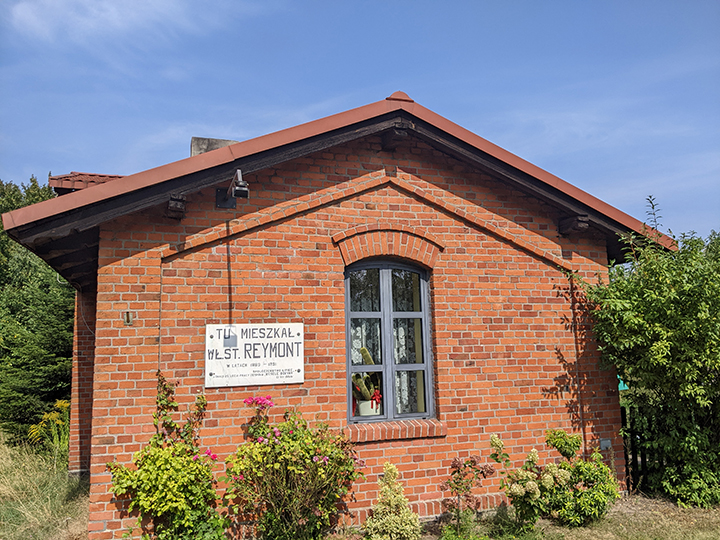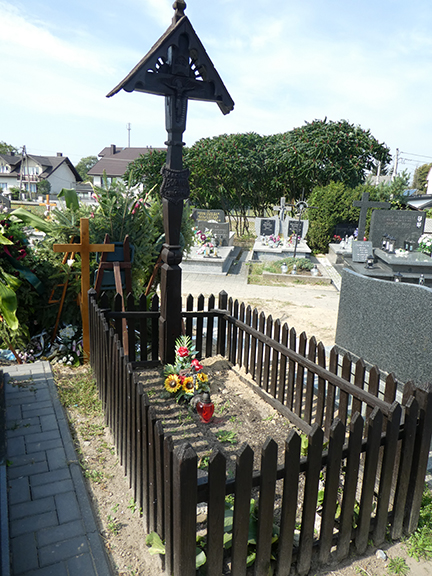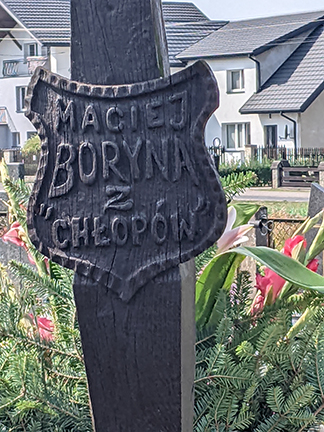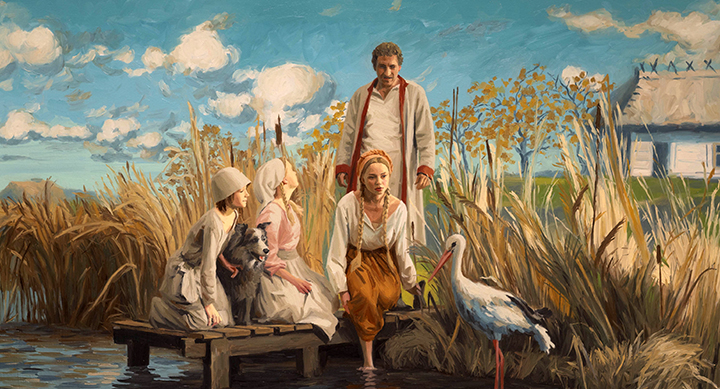The 100th Anniversary of Władysław Reymont’s Nobel Prize for „The Peasants”

*
Joanna Sokołowska-Gwizdka
On November 13, 1924, Władysław Reymont was awarded the Nobel Prize in Literature for his monumental novel „The Peasants.” This four-volume epic, which Reymont wrote between 1901 and 1908, was published in installments in „Tygodnik Illustrowany” from 1904 to 1909. The novel’s action spans ten months—from September to July at the turn of the 19th and 20th centuries—and is set in the small village of Lipce. It is divided into four parts, each reflecting the cycle of nature: „Autumn,” „Winter,” „Spring,” and „Summer.” The renowned literary critic Kazimierz Wyka emphasized that Reymont created a unique work in Polish literature, one that not only tells the story of the peasants’ lives but also faithfully captures their mentality, customs, and worldview. In his analysis, Wyka noted how the author constructs the depicted world through the rhythms of nature, cyclical agricultural work, the changing seasons, and festivals that dictate the rhythm of the characters’ lives. „The Peasants” is also a study of universal human emotions and conflicts—love, jealousy, greed, and the struggle for power—giving the novel a timeless and universal character.

Władysław Reymont, born on May 7, 1867, as Władysław Stanisław Rejment in Kobiele Wielkie, within the Russian Partition, spent his youth during a time when Poland was divided among three empires. Artistically connected with the Young Poland movement, he drew inspiration from the lives of ordinary people and the Polish countryside. In his works, such as The Promised Land and The Comedienne, he portrayed not only the beauty but also the hardships and injustices that were the daily realities of his characters. Before becoming a writer, Reymont worked as a railway laborer and an actor in a traveling theater, experiences that later inspired his literary work.
The Nobel Prize in Literature, awarded for „the most outstanding work of an idealistic tendency,” recognized Reymont’s epic narrative and his realistic and poetic depiction of rural Polish life. However, the Nobel Committee’s decision in 1924 was unexpected. Although Reymont was respected in Poland, his fame did not match that of other candidates, such as the German writer Thomas Mann, the Russian playwright Maxim Gorky, or the 1915 French Nobel laureate Romain Rolland. In addition to honoring the literary value of The Peasants, the prize for the Polish author also had a political dimension—it highlighted international recognition of Poland, which regained its independence in 1918 after 123 years of partition.
Reymont, who had long struggled with health issues, including a heart attack, did not receive the news of the award with excessive enthusiasm, aware that it might be his last great achievement. He passed away a year later, on December 5, 1925, at the age of only 58. In letters to friends, he wrote about the “irony of life”—on one hand, worldwide fame and recognition, and on the other, the battle with illness that prevented him from fully enjoying his success. Due to health reasons, he was unable to personally accept the award in Stockholm; instead, it was received on his behalf on December 10, 1924, by Alfred Wysocki, the then-Polish diplomatic representative in Sweden. The monetary prize, amounting to 116,000 Swedish crowns, helped the writer with medical treatments and provided financial security for his family.

Reymont’s success was a source of immense national pride for Poles, especially in the context of rebuilding the state after regaining independence. Newspapers such as Kurier Warszawski and Rzeczpospolita published enthusiastic articles, praising the writer’s talent and the significance of his work for Polish national identity. Reactions abroad varied—some critics expressed surprise that the prize was awarded to a lesser-known author. German newspapers, such as the Frankfurter Allgemeine Zeitung, emphasized that Thomas Mann, the author of Buddenbrooks, was more deserving of the distinction. The Swedes, however, believed that Reymont brought freshness and authenticity to European literature, fully justifying their choice.
On November 22, 1924, Warsaw’s Tygodnik Illustrowany published an article titled „The European Press on Reymont.” The article revealed how deeply Europeans were engaged with literature at the time and how moved they were by the news of the award. There were extensive articles about the author (some newspapers dedicated entire issues to Reymont) as well as critical essays on The Peasants and brief informational notes. Tygodnik Illustrowany also published a letter from Romain Rolland:
Thank you very much for sending me the French translations of your two books. As for The Peasants (Autumn), I hold it in the highest regard. What a fertile and rich land. (…)
Happy is the one who, like you, is not merely a laborer of books (as Goethe said, the more one writes or reads such books, the more one becomes a book himself!)—but is instead the land itself—his own land, in the full cycle of the four seasons!
I congratulate you, I congratulate not just you but your entire nation through you. I rejoice that Poland has you, and I thank you for allowing me the privilege of knowing you.
Believe me, dear Mr. Władysław Reymont, that I am fully devoted to you with all my admiration.
Romain Rolland
The widespread popularity of Reymont’s epic led to numerous translations and publications of The Peasants worldwide. Reymont himself was invited to attend meetings at literary societies across Europe. On June 6, 1925, Tygodnik Illustrowany published an article titled „The Worldwide Fame of Reymont,” in which the author discussed the many invitations the writer accepted during the spring of 1925. Although Reymont had been unable to accept the Nobel Prize in person, these later travels benefited him. The color returned to his cheeks, and a smile reappeared on his face, along with his former energy. During this period, he frequently heard that the literature he created had become a part of the world’s cultural heritage. American newspapers expressed gratitude that the Nobel Committee had recognized this previously lesser-known yet truly brilliant author.

A hundred years after being awarded the Nobel Prize, The Peasants remains one of the most significant works of Polish literature. The novel has inspired numerous film, theater, and television adaptations, including the latest animated painting version, which has received acclaim both in Poland and abroad. The Peasants continues to be studied by literary critics and scholars who analyze its social layers as well as the symbolism of nature and the life cycle.
In the context of global climate change, Reymont’s message about the harmony between humans and nature takes on new relevance. The themes of returning to tradition, defending local cultures, and preserving agriculture in the face of globalization are presented in The Peasants in a way that remains both timely and thought-provoking.

Polish Nobel Prize Laureates in Literature:
- Henryk Sienkiewicz – 1905
- Władysław Reymont – 1924
- Czesław Miłosz – 1980
- Wisława Szymborska – 1996
- Olga Tokarczuk – 2018
*
Sources: Wikipedia, TVP, Culture.pl, NobelPrize.org, Tygodnik Illustrowany, collections of the University Library in Łódź.
*
G A L L E R Y












